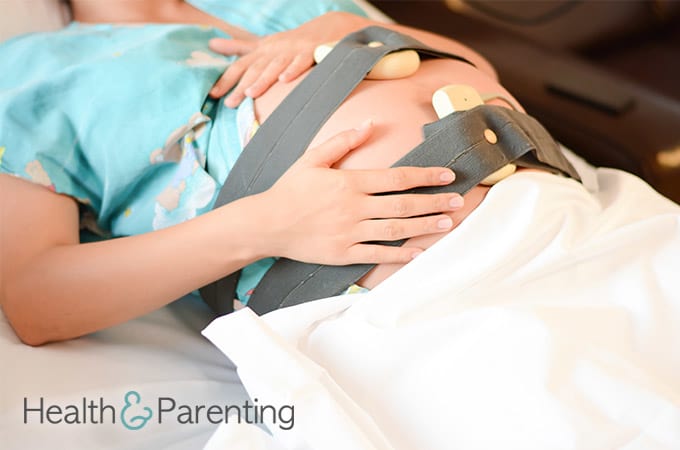As you get closer to labor and delivery, chances are you have heard a bunch of stories from other moms. Some of these stories include the horrific details of their births, or advice on things that these women think you should avoid at all costs. You will have some people who suggest you don’t take pain medications, and others that warn you about things during labor and delivery that will likely NEVER happen.
Many women hear about electronic fetal monitoring during labor and wonder if there might be pros and cons to the intervention.
Electronic fetal monitoring during labor is designed to monitor your baby’s heart rate and the frequency of your contractions. Most often, the heartbeat and contraction monitors are placed externally on your belly, and while you are in labor you will be able to hear your baby’s heartbeat and see your contractions on a monitor.Your healthcare providers will use this information to help monitor your progress and to make sure that the baby is not in any distress during labor. This monitoring is typically intermittent – occasionally during labor, your provider will suggest a brief period of monitoring to see how things are progressing. If any unusual events occur, continuous monitoring may be suggested.
While generally safe, some people feel that this constant monitoring can cause stress to the mother and worry on behalf of the doctors, especially if they notice the baby’s heart rate decreases significantly after contractions. At that point, it can be difficult for doctors to know if the decreased heart rate is due to the normal drop in oxygen (from the contraction) or if it is a sign of fetal distress. Since doctors cannot tell for sure, experts believe fetal monitoring leads to a higher level of cesarean births because doctors ‘jump the gun.’
Another downside to electronic fetal monitoring is that it decreases a mom’s mobility during labor. Unless your facility has wireless machines, you will only be able to walk as far away from the machine as the cords will let you go. The leads from your belly to the machine can make changing position difficult, and can cause the nurses to suggest you just lay in bed to keep them from moving. Staying flat on your back and immobile in a hospital bed can slow the progress of your labor and make you uncomfortable.
Occasionally, the external monitors are not able to accurately track your baby’s heart rate, or your contractions. In this situation, your provider may suggest internal monitoring – a much more invasive procedure. If your bag of waters is still intact, it will be ruptured artificially so that the heart rate monitor can be attached to baby’s scalp. The contraction monitor is a thin catheter that will be inserted into the uterus. It is typically taped to the inside of your thigh so that it doesn’t become dislodged. Once these leads are placed, you will be monitored continuously throughout the remainder of your labor.
Some people believe the benefits of having this technology are well worth the downsides. Years ago, midwives and doctors had no idea what was going on with the baby, and oftentimes when a baby WAS in distress, doctors couldn’t help the baby. Also, there are many women who feel comforted by hearing the constant heartbeat of their baby when they are in labor. Hearing your baby’s heartbeat while you are in labor may help you truly connect to the experience that there is a beautiful and live little baby inside of you just waiting to come out.
The best rule of thumb when it comes to your healthcare during pregnancy and labor and delivery, is to ask your providers questions about the pros and cons of any procedure, and to learn more about the impact on your labor, as well as your and your baby’s health. The ultimate goal for YOU and for them is to delivery a healthy baby and to keep you healthy as well. If you have questions, don’t be afraid to ask.
Written By Stef, Mom of 4 @Momspirational, with editorial content from Michelle
This information is not intended to replace the advice of a trained medical doctor. Health & Parenting Ltd disclaims any liability for the decisions you make based on this information, which is provided to you on a general information basis only and not as a substitute for personalized medical advice. All contents copyright © Health & Parenting Ltd 2017. All rights reserved.










